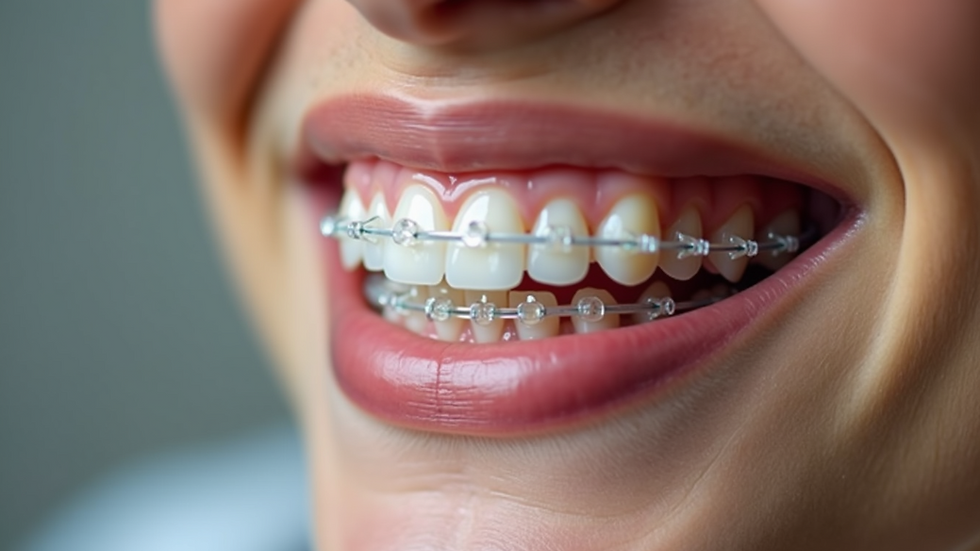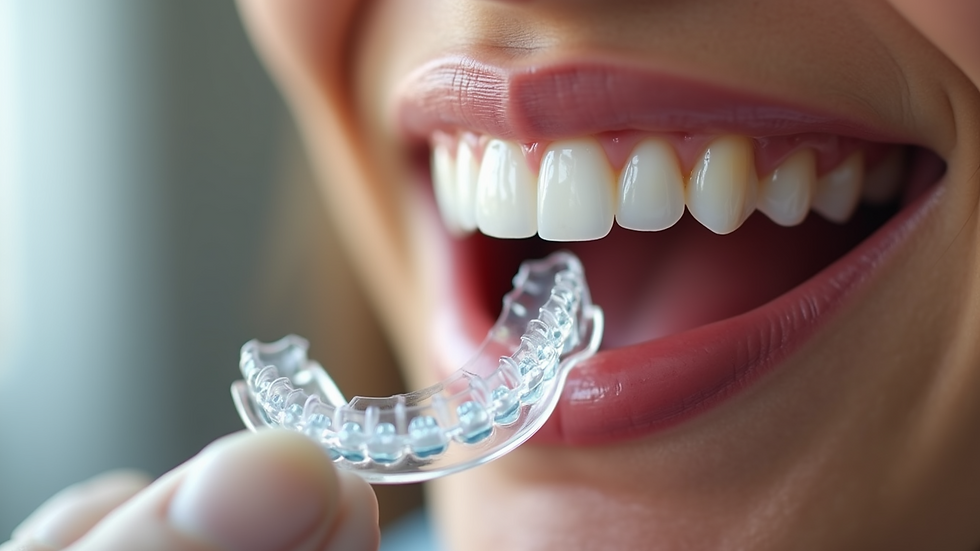Exploring Orthodontic Options for Straighter Teeth
- Arcadia Dental Group
- Sep 30
- 4 min read
Achieving a straighter smile is a common goal for many people. Fortunately, modern dentistry offers a variety of orthodontic options to help align teeth effectively. Whether you want to improve your bite, enhance your appearance, or boost your confidence, there are solutions tailored to different needs and lifestyles. This article explores the most popular orthodontic treatments, their benefits, and what you should consider before choosing the right one for you.
Understanding Different Orthodontic Options
Orthodontic treatments have evolved significantly over the years. Traditional metal braces are no longer the only choice. Today, patients can select from several options based on comfort, aesthetics, and treatment duration.
Traditional Metal Braces
Metal braces are the most recognizable orthodontic treatment. They consist of metal brackets attached to the teeth and connected by wires. These braces gradually move teeth into the desired position.
Advantages: Effective for complex cases, generally the most affordable option.
Disadvantages: Visible appearance, potential discomfort, and dietary restrictions.
Ceramic Braces
Ceramic braces work like metal braces but use clear or tooth-colored brackets. This makes them less noticeable.
Advantages: More discreet than metal braces, effective for most cases.
Disadvantages: Slightly more expensive, brackets can stain if not cared for properly.
Lingual Braces
Lingual braces are attached to the back of the teeth, making them invisible from the front.
Advantages: Invisible when smiling, effective for complex corrections.
Disadvantages: Can be uncomfortable initially, more expensive, and harder to clean.
Clear Aligners
Clear aligners are transparent, removable trays that gradually shift teeth. Invisalign is the most well-known brand.
Advantages: Nearly invisible, removable for eating and cleaning, comfortable.
Disadvantages: May not be suitable for severe cases, requires discipline to wear consistently.

Choosing the Right Orthodontic Options for You
Selecting the best orthodontic treatment depends on several factors. Here are some key considerations:
Treatment Goals and Complexity
Mild to moderate misalignment: Clear aligners or ceramic braces may be sufficient.
Severe misalignment or bite issues: Traditional metal or lingual braces might be necessary.
Aesthetic Preferences
If you want a discreet option, clear aligners or ceramic braces are preferable. Lingual braces offer invisibility but may be less comfortable.
Lifestyle and Maintenance
Active lifestyle: Removable aligners allow more flexibility.
Oral hygiene: Braces require careful cleaning to avoid plaque buildup.
Budget
Costs vary widely. Metal braces tend to be the most affordable, while lingual braces and clear aligners can be more expensive.
Treatment Duration
Most orthodontic treatments last between 12 to 24 months, but this varies based on the method and individual case.
For those seeking an alternative to braces, clear aligners often provide a convenient and less noticeable solution.

Is Invisalign Actually as Good as Braces?
Invisalign has gained popularity due to its discreet appearance and convenience. But how does it compare to traditional braces in terms of effectiveness?
Effectiveness
Invisalign works well for mild to moderate orthodontic issues such as minor crowding, spacing, and some bite problems. However, for complex cases involving significant tooth rotation or jaw alignment, braces may be more effective.
Comfort and Convenience
Invisalign trays are smooth and removable, making them more comfortable and easier to clean than braces. Patients can eat without restrictions and maintain better oral hygiene.
Compliance
Success with Invisalign depends heavily on patient compliance. The aligners must be worn 20-22 hours a day. Failure to do so can prolong treatment or reduce effectiveness.
Cost
Invisalign can be more expensive than traditional braces, but many find the benefits worth the investment.
Summary
Invisalign is a great option for many patients, especially those prioritizing aesthetics and comfort. However, consulting with an orthodontist is essential to determine if it suits your specific needs.

Tips for Maintaining Your Orthodontic Appliances
Proper care of your orthodontic devices is crucial for successful treatment and oral health.
For Braces
Brush teeth after every meal using a soft-bristled toothbrush.
Use interdental brushes or floss threaders to clean between brackets.
Avoid sticky, hard, or sugary foods that can damage braces.
Attend regular orthodontic appointments for adjustments.
For Clear Aligners
Clean aligners daily with a soft toothbrush and mild soap.
Avoid eating or drinking anything other than water while wearing aligners.
Store aligners in their case when not in use to prevent loss or damage.
Follow your orthodontist’s schedule for changing trays.
General Oral Hygiene
Maintain regular dental checkups and cleanings.
Use fluoride toothpaste to strengthen enamel.
Address any discomfort or issues with your orthodontist promptly.
Exploring Future Trends in Orthodontics
Orthodontics continues to advance with new technologies and materials improving patient experience and outcomes.
3D Imaging and Treatment Planning
Digital scans and 3D imaging allow precise treatment planning, reducing errors and improving results.
Accelerated Orthodontics
Techniques like micro-osteoperforation and vibration devices can speed up tooth movement, shortening treatment time.
Customized Appliances
3D printing enables the creation of personalized braces and aligners tailored to individual anatomy.
Integration with Cosmetic Dentistry
Combining orthodontics with whitening, bonding, or veneers can enhance overall smile aesthetics.
These innovations promise more comfortable, faster, and effective orthodontic care in the near future.
Choosing the right orthodontic option is a personal decision that depends on your dental needs, lifestyle, and preferences. Whether you opt for traditional braces, clear aligners, or other treatments, the key is to work closely with your orthodontist to achieve the best results. A straighter smile not only improves appearance but also contributes to better oral health and confidence.



Comments